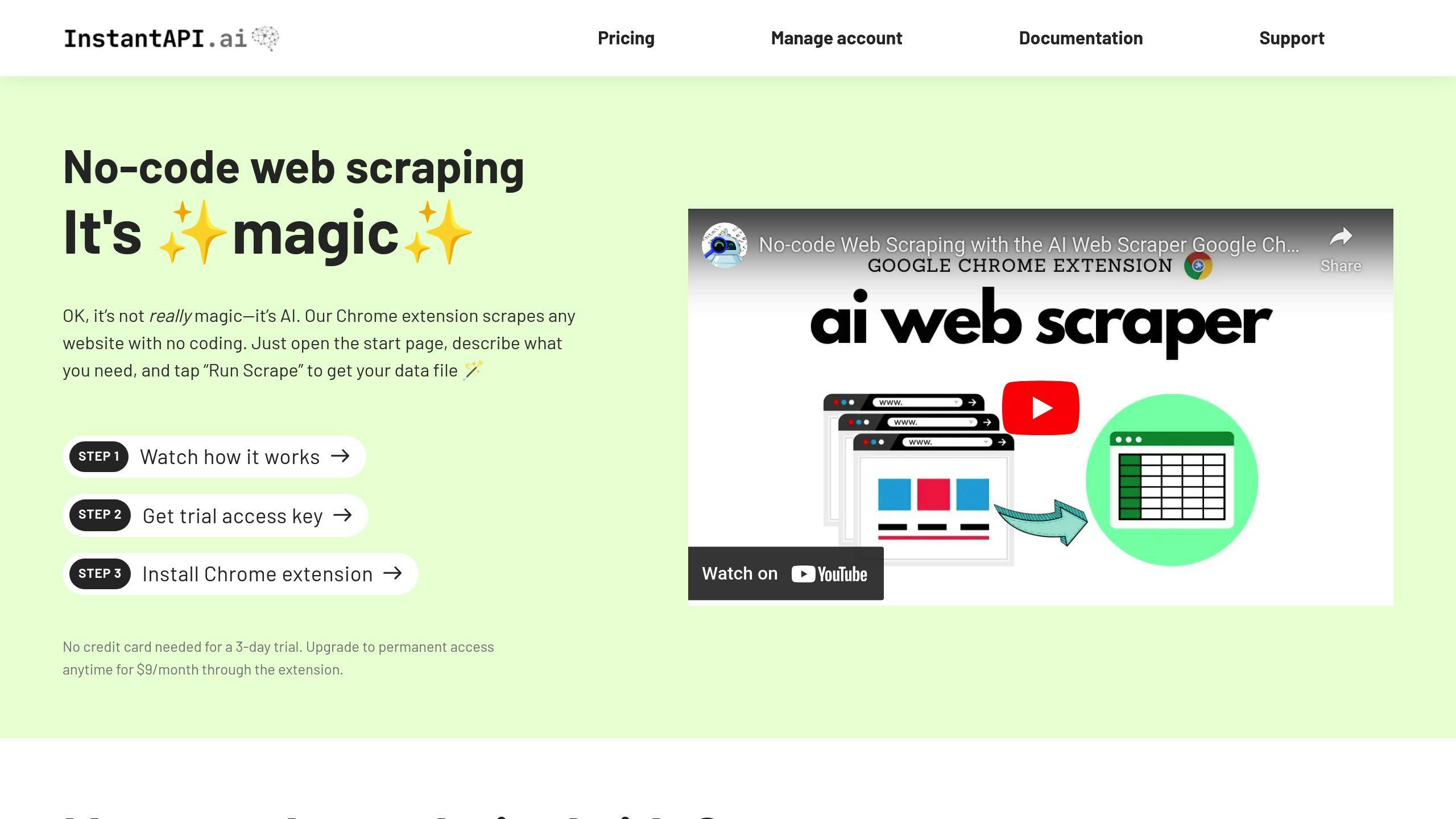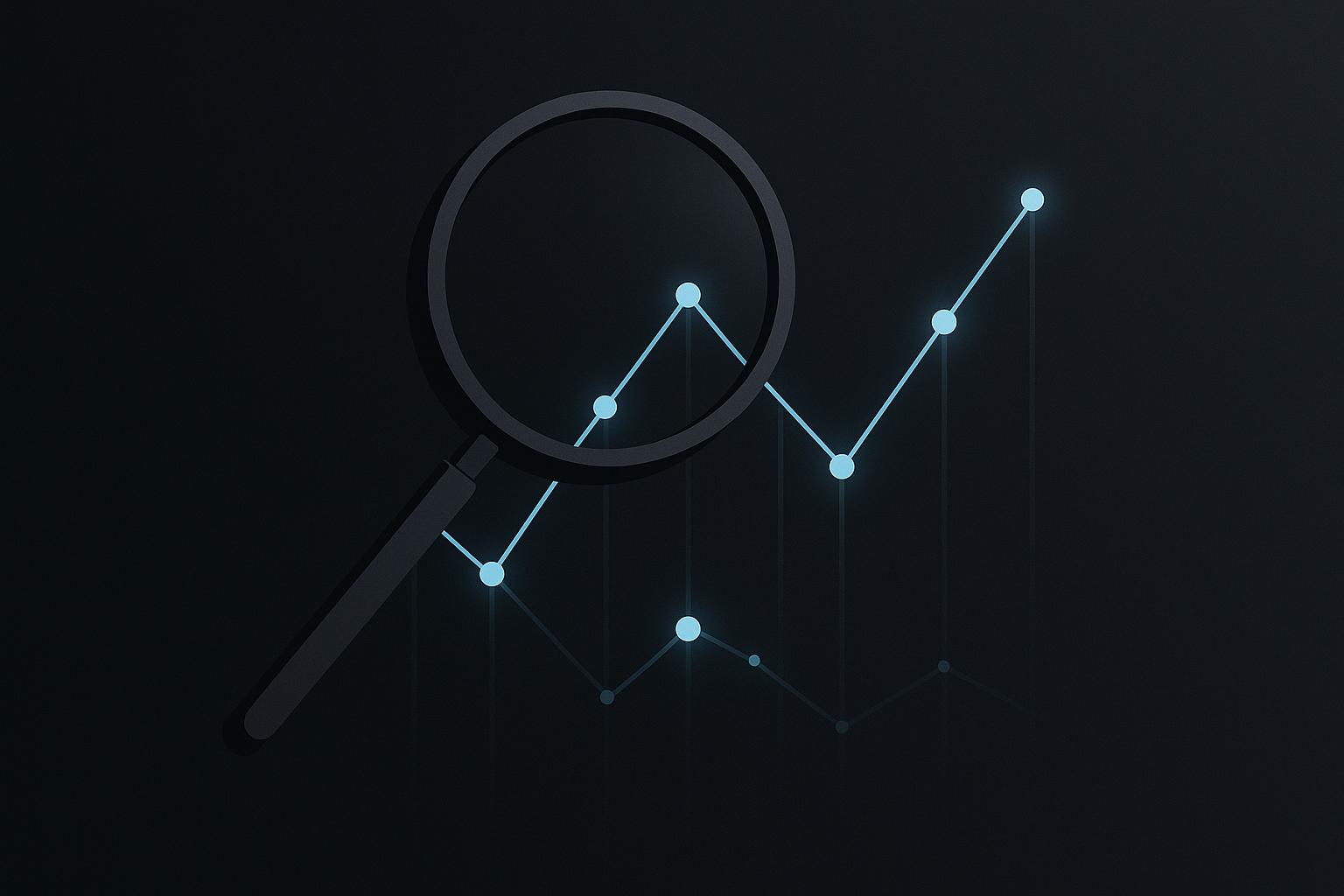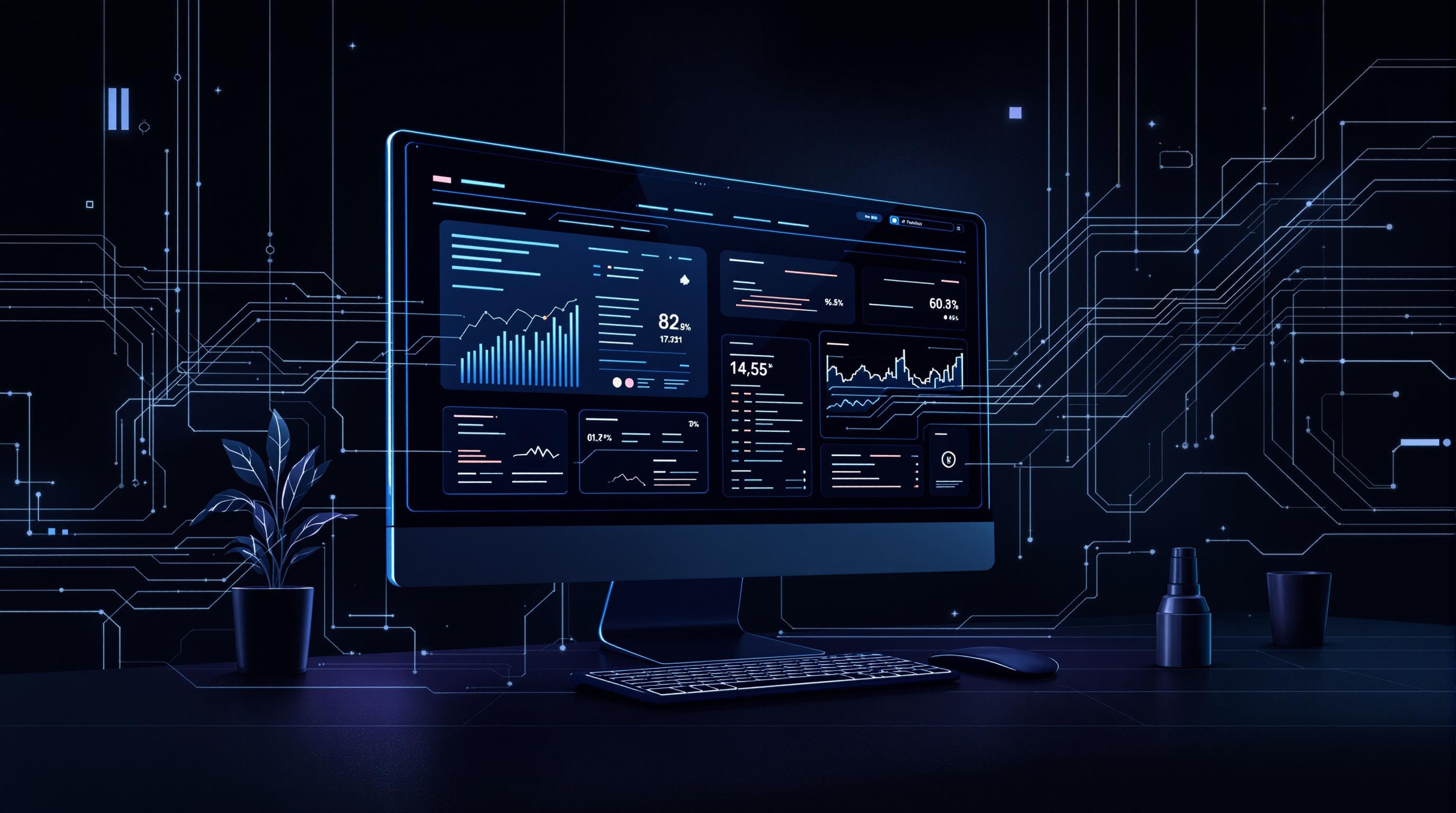AI makes raw data useful. It automates web scraping, cleans messy data, and transforms it into insights businesses can act on. Tools like InstantAPI.ai and Diffbot combine scraping, machine learning, and natural language processing (NLP) to simplify this process. Here's how it works:
- Data Preparation: AI cleans and structures data using methods like filling missing values or extracting entities from text.
- Pattern Recognition: Machine learning identifies trends, predicts market shifts, and detects anomalies.
- Text & Image Analysis: NLP processes text for sentiment or topics, while computer vision analyzes images for tasks like object detection.
- Visual Insights: Tools like Tableau turn findings into dashboards, making insights easy to understand and use.
Quick Tip: Clean data is critical for accurate results. Automated tools ensure quality, so businesses can focus on decisions, not data prep. Ready to turn your raw data into decisions? Let’s dive deeper.
Preparing Scraped Data for AI
Cleaning and Preprocessing Data
High-quality data is the backbone of effective AI analysis. Libraries like NumPy provide tools to address missing values using statistical methods such as mean or median imputation. For instance, if you're analyzing e-commerce product data and some prices are missing, you can fill those gaps with category averages to keep the dataset consistent.
Data validation is equally critical. Anthony Ziebell, founder of InstantAPI.ai, emphasizes this point:
"The quality of AI insights directly correlates with the cleanliness of input data. Our platform implements automated validation rules to ensure data accuracy before any AI processing begins."
These steps lay the groundwork for transforming raw, unstructured data into formats that AI can process, using techniques like Natural Language Processing (NLP) and computer vision.
Converting Unstructured Data
Once the dataset is cleaned, converting unstructured data into usable formats requires specific approaches. For text data, NLP techniques include:
- Entity extraction
- Sentiment analysis
- Topic classification
- Text summarization
For visual data, computer vision leverages neural networks to analyze images, which is especially useful for tasks like product image recognition.
The table below highlights common data types and their conversion methods:
| Data Type | Conversion Technique | AI Application |
|---|---|---|
| Raw Text | NLP Processing | Sentiment Analysis, Topic Modeling |
| Images | Computer Vision | Object Detection, Classification |
| Tables | Structure Parsing | Data Relationships, Pattern Recognition |
| HTML | DOM Parsing | Content Extraction, Website Analysis |
Diffbot's knowledge graph technology showcases how effective these methods can be, excelling in tasks like entity recognition. Platforms like InstantAPI.ai further simplify the process by automating much of the preprocessing work.
Web Scraping and Enterprise Machine Learning
AI Tools and Methods for Data Analysis
Modern AI tools simplify the process of uncovering patterns and delivering actionable insights from scraped data.
Using InstantAPI.ai for Web Scraping

InstantAPI.ai is part of a new wave of scraping tools that remove the need for coding expertise. For $9/month, its Chrome extension offers unlimited automated scraping through a user-friendly, no-code interface. This automation feeds directly into machine learning processes for identifying patterns.
Machine Learning for Identifying Patterns
Machine learning algorithms take cleaned and structured datasets and turn them into insights, such as customer behavior patterns.
| Technique | Use Case | Purpose |
|---|---|---|
| Clustering | Customer Segmentation | Groups customers based on shared behaviors |
| Classification | Market Trend Prediction | Categorizes new data using past trends |
| Anomaly Detection | Fraud Prevention | Flags irregular transaction patterns |
| Regression Analysis | Price Optimization | Predicts pricing based on market trends |
NLP for Text Analysis
Building on text preparation techniques, Natural Language Processing (NLP) is used to analyze structured text for deeper insights.
"AI-powered web scraping tools handle continually changing website designs and dynamic content, ensuring more resilient data extraction", says Gulbahar Karatas from Research.aimultiple.com.
NLP applications include sentiment analysis to measure customer satisfaction, content categorization for managing large text datasets, and information extraction to pinpoint specific data points. These processes make large-scale text analysis faster and more efficient.
Together, these tools and techniques streamline the journey from raw data to actionable business insights, with each step contributing to the overall transformation.
sbb-itb-f2fbbd7
Presenting and Using AI Insights
Creating Useful Visualizations
Once patterns are identified using ML and NLP (as discussed earlier), visualization tools step in to turn these findings into easy-to-understand formats. The key is to tailor visualizations to the audience's needs. Tools like Tableau and Power BI excel at creating interactive dashboards, offering insights such as real-time customer behavior for sales teams or product adoption metrics for product managers.
| Visualization Type | Best Use Case |
|---|---|
| Real-time Dashboards | Monitoring performance |
| Predictive Charts | Analyzing trends |
| Heat Maps | Recognizing patterns |
| Interactive Reports | Conducting deep dives |
Applying Insights in Business
These insights rely on clean, well-organized data, prepared through the preprocessing techniques covered earlier. For example, many email platforms now use AI insights to improve campaign results with automated personalization and content adjustments.
InstantAPI.ai provides a great example of how AI-processed data can be visualized and acted on immediately, making insights accessible across all levels of an organization.
To get the most out of AI insights, businesses should:
- Define clear metrics: Set specific KPIs to evaluate the success of AI-driven decisions.
- Establish feedback loops: Regularly refine AI models based on real-world results to improve their accuracy.
- Share insights across teams: Use centralized dashboards, like those built in Tableau, to ensure everyone has access to the same data.
The goal is to translate complex data into straightforward recommendations that align with business goals, helping teams take actionable steps that lead to real progress.
Best Practices for AI Data Analysis
Improving AI Models
To keep AI models running smoothly and delivering results, it's crucial to focus on a few operational priorities:
- Data Quality Management: Use automated validation workflows to ensure the data being scraped meets the necessary standards. This aligns with the preprocessing methods discussed earlier.
- Model Performance Tracking: Keep an eye on key performance metrics. Regular evaluations can highlight areas for improvement and help maintain system efficiency.
- Feedback Integration: Set up systems that automatically feed business outcome data back into the training process, helping models learn and improve over time.
Staying Updated in the AI Space
AI platforms like InstantAPI.ai are constantly evolving, and businesses need to stay on top of these changes to remain competitive. As highlighted in this guide, keeping up with advancements is essential for effective AI use.
Focus on these areas to stay ahead:
- Technical Updates: Regularly adopt updates to platforms like InstantAPI.ai and Diffbot to enhance your data analysis pipelines.
- Algorithm Improvements: Stay current with algorithm changes and ensure compliance with data source regulations.
FAQs
What are AI-driven insights?
AI-driven insights are findings generated by machines using automated pattern recognition on large datasets. Unlike traditional methods, these insights can uncover subtle trends and relationships that might go unnoticed by human analysts.
Here's what makes AI-driven insights stand out:
- Handle vast amounts of unstructured data with ease.
- Automatically detect complex patterns and correlations.
- Provide real-time insights for quick decision-making.
- Improve accuracy over time as the system learns.
For example, tools like InstantAPI.ai combine scraping and analytics to turn raw data into useful intelligence. These systems excel in areas like pattern recognition, natural language processing, and automated analytics, offering clear insights to help decision-makers take action.
To ensure reliable results, maintaining high data quality is crucial. Regular model validation is key, as highlighted by Anthony Ziebell, who stresses the importance of clean data for accurate AI processing. This approach aligns with strategies for managing data quality, ensuring that insights stay relevant and precise for business decisions.


